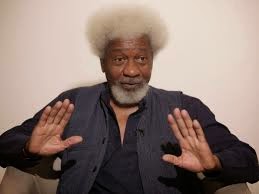How United States, OECD Nations Forced Fall In Oil Prices
 |
| Jonathan |
By Eke Uchechukwu
Oil is first and foremost a commodity. Besides being a commodity, oil
also had been variously described as a weapon, a strategic asset, a curse and a
maker and spoiler of fortunes. Crude oil prices like prices of other
commodities are controlled by the forces of demand and supply. Thus like other commodity markets, the crude oil
market is cyclical with prices falling and rising in response to changes in
demand as well as OPEC and non-OPEC supply. Such crude oil price cycles often
vary from a week to several years. Currently global oil prices have been
falling steadily since June 2014. OPEC
daily basket price for instance, declined by 54.4 per cent from $110.30 per
barrel Monday, 23 June 2014 to $50.30 per barrel Monday, 23 March 2015. This oil prices slump generally attributed to
market oversupply arising from shale oil boom in the United States and OPEC’s
uncharacteristic refusal to cut production is reversing the economic fortunes
of oil exporting and importing nations. The falling crude oil prices have
turned the economic stress which high oil prices imposed on oil import
dependent nations led by the United States into economic fortune while turning
the fortune of export dependent nations led by Russia into economic doom.
Following the oil price crash, the economies of oil import dependent nations
have been expanding accompanied by sharp growth in job placement. On the
contrary, the economies of oil export dependent OPEC nations have been contracting,
going through a period of local currency depreciation, high inflation and
unemployment. It is therefore not surprising that oil import dependent nations
who are benefiting from the low oil prices would want the situation to
continue, while OPEC nations whose economies are undergoing sever stress, look
up to a very quick price recovery. The question being asked is, how soon will
global crude oil prices rebound? Any attempt at providing an answer to this
question that focuses on the immediate roles of OPEC and the U.S in this oil
price slump but ignores a critical review of the remote causes, will not
suffice.
The Organisation of Petroleum Exporting Countries (OPEC) came into
existence in 1960, with the stated objective of promoting the economic interest
of her members by ensuring that they get the right value for their oil. At least
up to 1973 OPEC strictly pursued this economic objective without much success
and without attracting much attention from the consuming nations. Prior to the
formation of OPEC in 1960 and even up to 1970, ten years after coming into
being, the control of oil prices lay with the Texas Railroads Commission. But
from 1970 the ability of the United States to produce oil began to decline thus
paving way for OPEC to take over the driver’s seat. Throughout the period the
Texas Railroads Commission held sway, oil prices remained low and fairly stable
around $3 dollars per barrel. In 1972 for instance oil price was $3.5 per
barrel. But that was the last time oil could be so cheap. In 1973 when the
members of the Organisation of Arab Petroleum Exporting Countries (OAPEC) who
are also members of OPEC imposed an oil embargo on the United States and its
allies for supporting Israel in the Yon Kippur war, the world became shockingly
aware of the powerful geopolitical weapon that oil can be. By the end of 1974,
average world crude oil price had spiked to $12 per barrel, inducing economic
recession to the disadvantage of the United States and its allies. A
consequence of the oil embargo which sounded the wakeup call on energy security
of the OECD member nations was that OPEC as a whole had courted the anger of
the U.S and Organisation for Economic Cooperation and Development (OECD) member
nations. Expectedly their reaction was
very sharp and swift. Realising that it
had lost her capacity to control the oil market through production, the United
States galvanized OECD member countries to square up with OPEC. OPEC was therefore marked out as a cartel
which must be destroyed at all cost, if the energy security of member nations
was to be guaranteed. To coordinate member nations’ energy policies to mitigate
the effect of the oil embargo and to prepare them for future oil supply
disruptions, the OECD in 1974 established the International Energy Agency
(IEA). The OECD felt that a coordinated response would prove more effective
than allowing individual nations ‘go-it-alone’. With the formation of IEA, the
world was effectively divided into three major energy market players, OPEC,
OECD and the ROW (rest of the world). It also marked the beginning of the
energy chess game between OPEC and OECD in which the ROW is the umpire.
In carrying out its mandate, the IEA formulated an emergency response
strategy which focused on four supply and demand side countermeasures. On the
supply side the strategy involved member nations implementing a strategic
Petroleum Reserve capable of holding equivalent of at least 90 days stocks. The
other supply side measure required member nations to increase domestic production
of oil. On the demand side the
counter measures formulated required OECD member nations to implement
energy conservation and efficiency as well as pursue the development of
alternative fuels. The pursuit of the objectives of the IEA countermeasure
spurred three kinds of energy
revolutions; a renewable
energy revolution aimed
at increasing the
development and deployment
of renewable energy from solar, hydro, wind, geothermal, and bio-energy
sources; energy efficiency revolution aimed at achieving energy conservation;
and shale oil and gas and other
unconventional oil and gas revolution
aimed at increasing the production of oil and gas from shale and tar sand. As a
result of the renewable energy and energy efficiency revolutions in OECD
nations and adopted by other countries, the share of oil in total energy
consumption in OECD for instance declined by 15 per cent from 46 per cent in
1973 to 31 per cent by 2012 and is still falling.
As the U.S, pursued her shale oil project, her
neighbour Canada was working on the development of her unconventional oil from
tar sand. Unarguably the current global slump in oil prices is not a chance
event but is the outcome of the menu of deliberate countermeasures implemented
by OECD member nations since the 1973/74 oil crisis. Renewable and energy efficiency programmes
and increased unconventional oil and gas
production from shale in the U.S and oil sands in Canada have combined to
radically alter the global energy market landscape and whittled down the
capacity of OPEC to influence the oil market.
Any wonder OPEC is in disarray. For the
first time OPEC cannot fight back by controlling supply. Rather she is
allowing market forces to play out, an indication of loss of control. The
reality is that the organisation cannot do otherwise, since it has also lost
its dominant share of world oil production. OPEC’s share of global oil
production had declined by 9 per cent, from 52 per cent in 1973 to 43per cent
in 2012 while production in OECD is increasing, with the United States of
America becoming the world’s largest oil and gas producer in 2014 after
overtaking Saudi Arabia and Russia.
OPEC by allowing market forces to resolve the
slump in oil prices is hoping that oil prices will rebound when higher cost
shale oil producing companies in the U.S hurting from low returns are forced to
cut production. In reality companies in OPEC nations are producing at a lower
cost than shale oil and tar sand oil producers in the U.S and Canada who are
therefore impacted more by the effect of falling oil prices. Declining rig
count statistics in the U.S may be a sign that companies are holding back on
new shale field development. But even at that production from already drilled
wells will take some time to stop. It remains to be seen however, how the U.S
will allow control slip from her so easily after working so hard in the last 41
years to extricate herself from the stranglehold of OPEC and having succeeded
not only in doing so but also in taking over the control of the market the
Texas Railroads Commission lost to OPEC in 1972. It is very doubtful that the
U.S will so miss this opportunity of seeing OPEC pay for the economic pain
inflicted on her and the OECD during the 1973/74 oil crisis and ever since.
Rather it seem plausible that the U.S government may have to do whatever it
will take to cushion the impact of low return for oil companies while she
watches OPEC in pains for as long time as possible. The IEA has predicted that
the influence of the U.S shale oil production on the global oil market will not
wane before the year 2020 and that OPEC will return to her preeminent position
as the world’s major supplier after that year. From now to the year 2020 will
imply five good years of economic strangulation for oil export dependent OPEC
member nations if oil prices do not rebound.
It is therefore imperative that OPEC countries hurting from declining
oil revenue need not wait till 2020 to react, otherwise there will be no OPEC
by then as members would have left to
design their individual optimal marketing strategies. Should OPEC disintegrate,
the OECD would have succeeded in killing two birds with one stone. Whether OPEC
continues to adopt the ‘do-nothing approach’ or decides to do something, what
is certain is that the world is in for a long low oil prices regime that will
last beyond 2015.
OPEC member nations must wake up to the above reality, that this price slump is different from
others previously and that their competitors the OECD are now in control. Like
the OECD in 1973/74 OPEC should move quickly
to fashion out measures to mitigate the impact
of this deadly
oil prices slump on their economies and currencies. The OECD may have
called on their technological ingenuity to overcome their energy supply problem
that has created the present problem for
OPEC, OPEC on the other hand is
not technologically endowed and therefore
must look inwards at their economic management systems for solution. Member nations must seize this opportunity to
aggressively implement the three D strategy of Diversification, Deregulation
and Discipline. There is no better
time than now to vigorously
embrace economic deregulation,
oil and gas sector
deregulation and fiscal discipline
in OPEC member nations.

Comments
Post a Comment